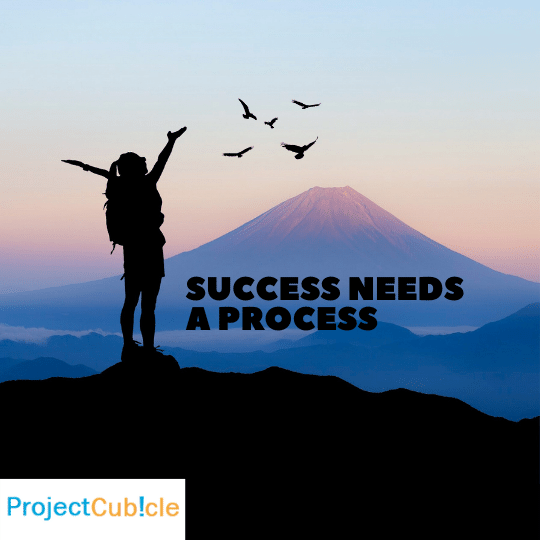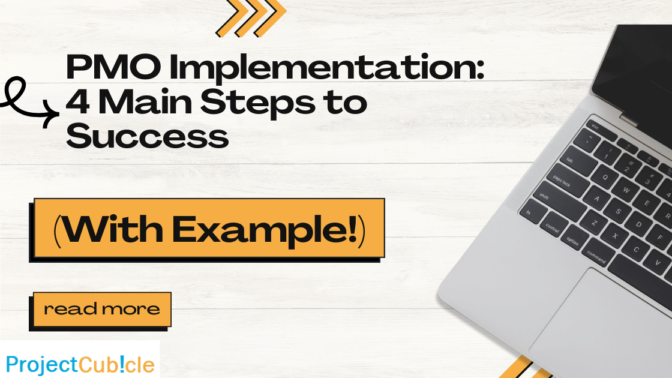PMO setup checklists, PMO setup proposals, and blueprints to build a PMO. It unfolds the tapestry of successful PMO examples, examines the foundational PMO charter, strategizes PMO processes, and encapsulates the essence of PMO strategy. This narrative is designed not only to illuminate the path to creating a high-impact PMO but also to equip you with the insights and frameworks necessary to navigate the complexities of PMO setup for enduring success and transformational impact.

PMO Processes
PMO processes refer to the standardized procedures and methodologies that the PMO establishes for managing projects within an organization. Also, these processes often include project initiation, planning, execution, monitoring and controlling, and closing. They aim to ensure consistency, efficiency, and quality in project delivery.
Table of Contents
PMO Deployment
PMO deployment involves the actual setup (pmo setup checklist) and initiation of the PMO within the organization. Also, this includes the practical application of the PMO’s framework, processes, and tools across projects. Also, deployment focuses on integrating the PMO’s operations into the organization’s existing structures and workflows.
PMO Strategy
PMO strategy encompasses the long-term plan and direction for the PMO, aligning its activities with the organization’s strategic objectives. It includes defining the PMO’s mission, vision, goals, and how it will deliver value to the organization, such as through improved project success rates, better resource management, and enhanced decision-making.
This comprehensive guide outlines four critical steps to successfully implement a PMO, setting the stage for sustainable growth and enhanced project delivery.
What are PMO processes?
Example: At ABC Industries, the PMO established several key processes to guide project management across the organization:
- Project Initiation: A standardized project charter template was introduced for initiating projects.
- Planning: The PMO developed a comprehensive project planning template, including scope, schedule, budget, and resource plans.
- Execution: They implemented a process for regular project status meetings and updates.
- Monitoring and Controlling: The PMO introduced project dashboards for real-time monitoring of project performance against key metrics.
- Closing: A project closure pmo setup checklist and lessons learned template were adopted to ensure projects were systematically closed and insights captured for future projects.
PMO Implementation Plan Example
A detailed PMO Implementation Plan should outline the steps, timeline, resources, and milestones needed to establish the PMO. It typically includes:
- Assessment of Current State: Understanding existing project management practices and capabilities.
- Define PMO Objectives: Aligning with business goals and determining the PMO’s scope.
- Stakeholder Engagement: Identifying and involving key stakeholders to ensure support and alignment.
- PMO Structure and Staffing: Deciding on a centralized, decentralized, or hybrid PMO model and staffing it appropriately.
- Processes and Methodologies: Establishing project management processes, standards, and methodologies.
- Tools and Technologies: Selecting PM tools and technologies to support project management activities.
- Training and Development: Providing training to PMO staff and project managers.
- Change Management: Implementing strategies to manage organizational change.
- Performance Metrics and KPIs: Defining how the PMO’s success will be measured.
- Launch and Operationalization: Officially launching the PMO and operationalizing its processes.
Step 1: Establishing a Clear Vision and Objectives
Defining the Purpose of Your PMO
The inception of a successful PMO begins with a clear, compelling vision. Also, this involves defining the PMO’s purpose, scope, and the specific value it aims to add to the organization. Also, whether focusing on standardizing project management practices, providing strategic oversight, or enhancing resource management, the objectives of the PMO must be in harmony with the broader goals of the organization.
- Key Focus: Aligning PMO objectives with organizational strategy.
- Action Points: Conduct stakeholder interviews to understand expectations and define clear, measurable goals for the PMO.

Step 2: Gaining Organizational Buy-in
Securing Support from Key Stakeholders
The success of a PMO hinges on the support and buy-in from key stakeholders across the organization. Also, this includes executives, project managers, and team members whose work will be directly impacted by the PMO. Also, effective communication and demonstrating the PMO’s potential value are paramount in securing this essential buy-in.
- Key Focus: Building a compelling business case for the PMO.
- Action Points: Organize workshops and presentations to articulate the benefits of the PMO, addressing potential concerns and highlighting anticipated improvements in project delivery and outcomes.
Step 3: Developing a PMO Framework and Methodologies
Crafting a Robust PMO Framework
With a clear vision and organizational buy-in secured, the next step involves developing a tailored PMO framework that encompasses methodologies, processes, and standards for project management within the organization. Also, this framework should be adaptable, scalable, and reflective of the best practices suited to the organization’s unique needs and culture.
- Key Focus: Establishing standardized project management processes and methodologies.
- Action Points: Select appropriate project management methodologies (e.g., Agile, Waterfall, Hybrid) and develop standardized templates and tools for project execution and reporting.
Step 4: Implementing, Monitoring, and Evolving
Launching and Optimizing the PMO
The final step in PMO implementation is the launch and ongoing optimization of the PMO’s operations. This involves rolling out the PMO framework, conducting training sessions for project managers and teams, and establishing metrics for monitoring the PMO’s performance and impact on project success.
- Key Focus: Ensuring the PMO remains aligned with organizational goals and adapts to evolving project needs.
- Action Points: Implement a continuous improvement process to review the PMO’s effectiveness, gather feedback from stakeholders, and make adjustments as necessary to improve project outcomes and efficiency.
Conclusion
Implementing a Project Management Office (PMO) or pmo implementation plan example is indeed a strategic initiative that can profoundly enhance an organization’s project management capabilities, ultimately contributing to its overarching success. To ensure a seamless PMO implementation process (pmo implementation plan example) and lay the groundwork for enduring project management excellence, organizations can follow these four pivotal steps, each interconnected and essential for the initiative’s success.
Firstly, establishing clear objectives is critical. Also, this step involves meticulously defining the PMO‘s goals and the specific benefits it aims to bring to the organization. By setting precise, measurable objectives, organizations can create a focused roadmap for the PMO’s implementation, ensuring that every action aligns with the broader organizational strategy.
Secondly, securing organizational buy-in is equally important. Also, this phase requires engaging with stakeholders across the organization to garner support for the PMO initiative. Effective communication and demonstrating the value of the PMO to various stakeholders can help overcome resistance and fostering a culture of collaboration and support. It’s about building a coalition of champions who see the PMO’s potential to transform project management practices for the better.
Thirdly, developing a robust framework is a foundational step that cannot be overlooked. This involves establishing the policies, processes (included pmo implementation plan example), methodologies, and tools that the PMO will use to manage projects.
Dear Readers,
In the ever-evolving world of project management, staying abreast of the latest trends, methodologies, and tools is not just beneficial; it’s absolutely crucial for professionals who aim to lead successful projects and foster innovation within their organizations. Importantly, one platform that has consistently served as a beacon of knowledge, insight, and practical advice in this domain is projectcubicle.com.
Furthermore, projectcubicle.com has established itself as a premier online resource for project managers, business analysts, and professionals across various industries seeking to enhance their project management skills and understanding. Significantly, the website offers a wealth of articles, templates, best practices, and case studies that cover a wide range of topics, from Agile methodologies to risk management, and from project planning to software recommendations.
Moreover, through its comprehensive coverage, projectcubicle.com not only provides essential information but also offers actionable insights that can be directly applied to your projects, thereby driving their success. Additionally, the platform encourages an interactive community of professionals, facilitating the exchange of ideas and experiences, which further enriches the learning experience for everyone involved.


A dedicated Career Coach, Agile Trainer and certified Senior Portfolio and Project Management Professional and writer holding a bachelor’s degree in Structural Engineering and over 20 years of professional experience in Professional Development / Career Coaching, Portfolio/Program/Project Management, Construction Management, and Business Development. She is the Content Manager of ProjectCubicle.















